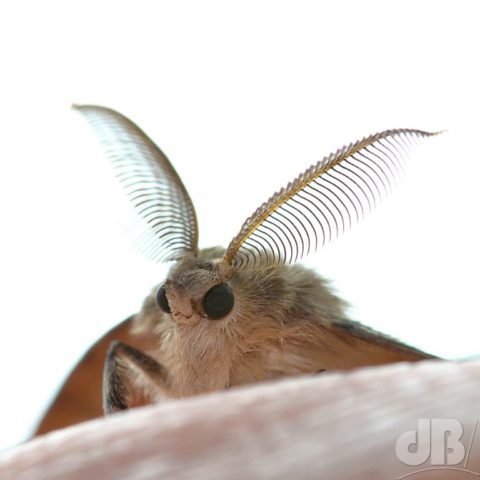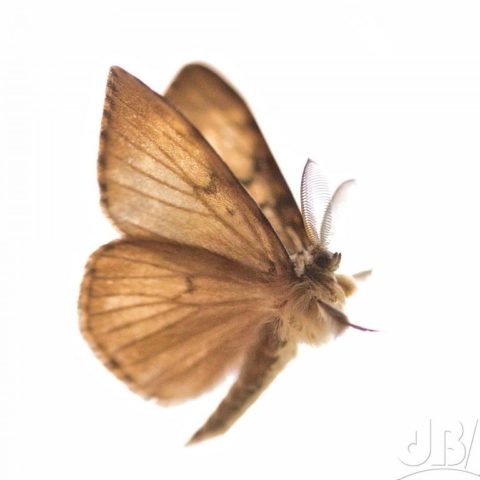I had my first Lymantria dispar sighting of the year in the garden last night. He was very battered and worn and had a chunk missing from his left wing. As such, I let him on his way without potting him to photograph and then release. So this is perhaps one of his ancestors photographed on my finger last year!

There’s a call in the US to remove inappropriate vernacular names for organisms and such from the textbooks. So, Stateside the moth is now often referred to as the Spongy Moth. The proposed name comes from the common name used in France and French-speaking Canada, Spongieuse, and alludes to the spongy mass of eggs laid by the females.
Incidentally, Geoffrey de Havilland was an amateur Lepidopterist, hence many of the names he gave his aircraft referring to moths, Tiger Moth, Gypsy Moth etc. I doubt there will be a name change of those vintage aircraft though.

Anyway, we always have the pseudo Latin scientific binomial, Lymantria dispar, to fall back on. I am not entirely sure whether that is a more politically correct name than the original English name of this species because it loosely translates as the “sexually dimorphic destroyer”.
Lymantria dispar is commonly still known as the Gypsy Moth in the UK, a name with racist connotations, hence the need to adopt an alternative vernacular name for the species.